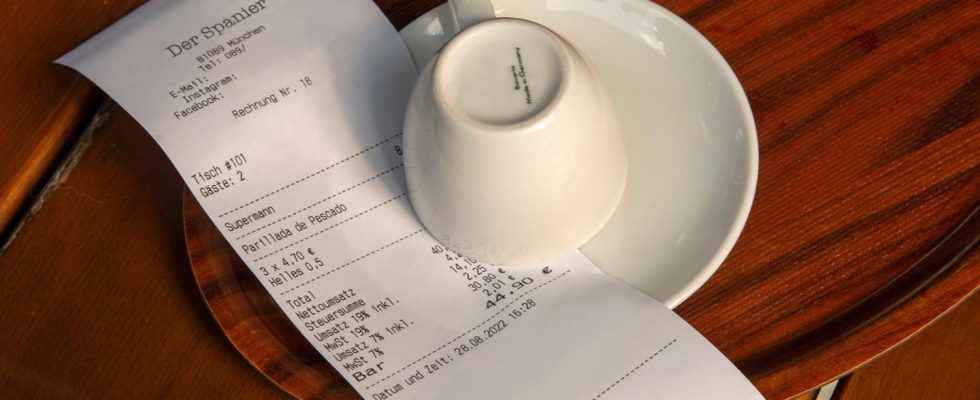With calculation examples
Visits to restaurants are becoming more expensive: How the VAT increase affects
If everything in your favorite restaurant is suddenly more expensive, it is most likely due to the VAT increase.
© Wolfgang Maria Weber / Imago Images
Since the turn of the year, the gastro VAT rate has returned to pre-Corona levels. What does this mean for consumers?
Rolling backwards in the restaurants, at the beginning of the year the VAT on food rose again from 7 to 19 percent. That’s it Corona aid, which was introduced in 2020 to relieve the burden on restaurants during the pandemic, is now a thing of the past despite vehement criticism from the industry association. It is to be expected that restaurants will compensate for the loss of tax breaks by increasing prices.
A survey by the German Hotel and Restaurant Association (Dehoga) at the end of last year showed that 89 percent of those surveyed wanted to increase prices. The reasons for this are obvious to Dehoga managing director Ingrid Hartges. Most companies have no leeway, Hartges told “Wirtschaftswoche”: “Hardly anyone can afford to invest money.”
Gastro VAT rate back to pre-Corona level
The tax rate reduction was also introduced because it was temporarily only possible to offer take-away during the pandemic. Even later, many customers preferred to take the food home with them rather than eat it on site in order to avoid infection. Since the lower tax rate of 7 percent has always applied to take-away and delivered food, the aim was to prevent distortion of competition through an overall reduction. Later, after restaurants had largely returned to normality, the energy crisis caused the federal government to extend the regulation several times.
With a return to the pre-Corona regulations, guests now have to pay extra for entertainment again, for example the waiter who serves the food and the appetizing dish on porcelain. However, only 7 percent VAT is still charged on the kebab that is eaten out of the paper wrapper at the bar table, as this is a so-called delivery of goods and not a restaurant service.

Calculation examples – this is how the tax increase could affect
Whether and to what extent innkeepers increase their prices is a decision for each individual. These calculation models show what price increases restaurant visitors can expect if the tax rate increase were passed on one-to-one: If a pizza currently costs 12 euros, it would have to cost around 13.30 euros from now on. For a schnitzel with fries, which previously cost 18 euros, you would have to pay 19.90. The price of a Sunday roast would rise from 24 euros to 26.60 euros.
Dehoga had strongly criticized the return to the old VAT rate. The industry association fears that this will cause economic hardship for many restaurants. The association’s survey also showed that 12 percent of the innkeepers surveyed saw their existence threatened by this and 5.2 percent would therefore even consider closing their business. Only 4.2 percent were optimistic and felt that they were not affected at all or hardly affected by the change.
Sources:Dehoga“Business Week“, “SZ magazine“



